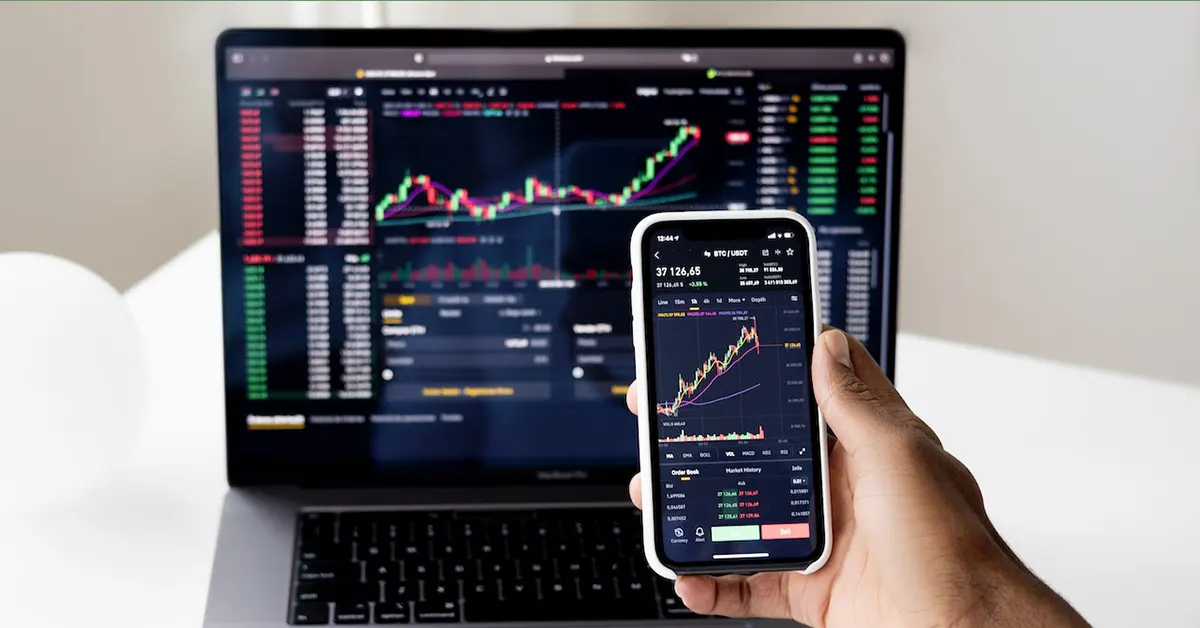With YouTube being the world’s go-to platform for video content, harnessing its full potential starts with increasing how many people watch your videos. But it’s not just about the numbers. It has everything to do with visibility, credibility, and the potential for your content to resonate with a broader audience.
In this post, I’ll let you in on 17 industry tips to help youget more views on YouTube. Over the years, my YouTube channel has ballooned to 314,000 subscribers and my personal finance videos have gotten over 17 million views — so you know that I know what I’m talking about!
Ready to take your YouTube game to the next level? Let’s dive in.
A YouTube view is more than just a passive click. To count as a view, a user needs to engage with your video for at least 30 seconds. And yes, watching your own video counts, so those late-night quality checks aren’t in vain.
Even if the same viewer watches your video multiple times, it’s counted as an additional view — within reasonable limits, of course. This also extends to embedded videos on other social media platforms; every view contributes to your video’s overall statistics.
Videos with higher view counts track more influence with the algorithm, making them more visible to audiences. It’s a virtual cycle: more views lead to more visibility, more visibility can lead to even more views, and — you guessed it — more views help you make more money on YouTube.
Additionally, a high view count is a badge of credibility and value. When viewers see a video with a massive view count, it acts as social proof that the content is worth their time. So not only can views influence your earnings, they can also act as a magnet for more visitors, fueling the cycle of growth.
To learn more about the financial perks, there’s a whole world to explore in terms of how YouTubers make money and I meticulously break them down into actionable steps.
And join over 800,000 readers getting our Rich Life Insiders newsletter:
Having an intimate understanding of your audience guides your content strategy in the right direction. When you know who’s watching, you can tailor your videos to answer their questions, cater to their interests, and truly resonate with them. It’s the secret to organic engagement.
How do you do this? By niching down. The more targeted and specific your niche, the easier it is to understand and cater to your ideal audience. If you’re just starting out, studying your competitors, diving into YouTube analytics, and actively listening to viewer feedback can give you valuable insight.
Creating viewer personas that represent your ideal audience members is also a smart move. This helps you understand their age, gender, location, interests, and the common problems they face.
Creators like Marques Brownlee (MKBHD) dominate the tech space by creating content that caters to tech enthusiasts looking for in-depth reviews and insights. By diving into his audience’s desires and preferences, he was able to create a dedicated 20 million fan base.
On my own YouTube channel, I Will Teach You to Be Rich, I showcase the real, unfiltered conversations from my podcast, offering a glimpse into the live, transformative moments when individuals tackle and overcome their money challenges. This unique approach not only sets my content apart but also taps into the raw, human emotions that resonate with viewers.
Viewers on YouTube are drawn to authenticity and value. When you consistently deliver unique and high-quality content, viewers not only subscribe but also become advocates, sharing your videos and expanding your reach organically. The key is to identify what makes your content stand out (whether it’s expert insights, engaging storytelling, or practical tips) and leverage that to create a memorable and valuable viewing experience.
YouTube SEO, or search engine optimization, ensures that great content gets discovered. Just like optimizing a blog post for search engines, you need to apply the same principles to your videos. This includes deciphering analytics, and strategically using keywords in your video title, description, and tags.
Take a page from successful creators like Neil Patel, who have mastered the art of YouTube SEO (and SEO in general). By understanding what their audience is searching for and strategically incorporating those terms into their video details, they’ve seen a substantial increase in views.
To be clear, it’s not about gaming the system but about aligning your content with what users are actively seeking.
Your video title is your first impression, and we all know the power of a great first impression!
Take a cue from Casey Neistat. His documentary-style videos have earned him over 3 billion views, partly because of click-worthy titles like “AI Made this VLOG”, and “I Was at Trump’s Arraignment, It Was Insane”. He doesn’t just describe the video — he teases, provokes, and promises something intriguing.
The key is to be specific and promise value (and make sure to deliver). If your video provides a solution, hint at it in the title. For instance, “Double Your Savings with This Simple Trick” tells viewers they’ll learn something valuable.
So, when you’re brainstorming titles, think like a viewer. What would make you curious? What promise would make you click? Remember, your titles are an invitation to an experience, and the more enticing, the more views you’ll attract.
Let’s look at real estate YouTuber Graham Stephan. He doesn’t just describe the video. He gives detailed breakdowns and turns the description into a table of contents, making it easy for viewers to know if his video has what they’re looking for.
An optimized description isn’t just about stuffing keywords. It’s a roadmap for your viewers. Tell them what to expect, drop a hint of what they might miss if they don’t watch, and add links to related content. Think of it as a trailer for your video. The more enticing, informative, and organized, the more likely viewers are going to watch and explore your channel further.
If you look at creators like MrBeast, they don’t just broadcast content but create a community. Responding to comments, asking for feedback, or even posing questions in your videos turns it into a two-way street.
…but you don’t have to take the same path as everyone else. How would it look if you designed a Rich Life on your own terms? Take our quiz and find out:
MrBeast, famous for his philanthropy and over-the-top challenges, thrives on audience engagement. From responding to comments to involving viewers in his stunts, he transforms passive viewers into an active community.
To do this, engage with your audience genuinely. Respond to comments, ask questions, run polls, and maybe throw in a challenge for your viewers. When your audience feels seen and heard, they become invested participants. This transforms occasional viewers into loyal subscribers, and the more engaged your audience, the more likely they are to watch, share, and eagerly anticipate your next upload.
Ever scroll through YouTube and find yourself captivated by a video, all thanks to that tiny but compelling image? That’s the power of a custom thumbnail. Along with your catchy title, your thumbnail makes for a lasting first impression — like the cover of a book.
Think about creators like PewDiePie. His thumbnails are colorful and expressive (and sometimes weird). They give you a sneak peek into the content and compel you to click.
So, how can you make this work for you? Use bold fonts, vibrant colors, and expressions that match your video’s vibe. It’s like designing a poster for a blockbuster film: you want people to stop scrolling and say, “I have to see this!”
Imagine you’re searching for the best productivity hacks, and you stumble upon my video. How did you find it? Likely through the magic of tags. These are the behind-the-scenes keywords that guide YouTube’s algorithm, ensuring your video shows up in the right search results and recommendations.
In short, tags help YouTubers reach the right audience (a.k.a. the people actively searching for what they’re offering). If you have a working idea of what social media hashtags are for, they’re similar.
To leverage tags, identify the key themes of your video, think about what someone might type in the search bar, and turn those into tags. If you’re giving personal finance advice, your tags might include “budgeting tips”, “investing for beginners”, or “saving hacks”.
A playlist is a YouTube feature that allows you to group your content like a curated show. Take my “Zero to Launch – Starting a Successful Online Business” playlist as an example. With topics like getting over the fear of failure, this playlist gives a crash course in holistic business literacy, one video at a time.
Now, why is this crucial for views? It’s an invitation to binge-watch all your videos. When someone starts watching one video, the playlist automatically cues up the next.
To succeed in this area, create playlists that tell a compelling story. If you’re a fitness guru, it could be “30 Days to a Healthier You”. Or if you’re into tech, you can create a “Gadgets of the Future” series.
If you’re not using a multi-channel approach, you’re missing out on a goldmine of potential views. YouTube is your grand stage for long-form content, your chance to shine with engaging, insightful videos. But, sharing your YouTube videos across other social media platforms ensures you reach a broader audience.
However, and this is a big however, you need to be strategic. For instance, by hosting a podcast, I’ve unlocked another avenue for my YouTube content. I don’t just copy and paste, that’s a rookie mistake. Instead, I use teasers, snippets, and highlights to generate excitement.
Remember, each platform has its vibe. Instagram loves short, snappy updates, X (Twitter) thrives on hashtags and witty one-liners, and Facebook is the place for more extended conversations. When I post a video on YouTube, I also post short clips on Instagram, engaging snippets on Twitter, and maybe a teaser on Facebook. In essence, I’m letting viewers know that “Hey, we’ve got something amazing, no matter how you like to consume it.”
This multi-channel strategy isn’t just about posting everywhere, but about adapting to the language of each platform, making your content a hit across the entire social media landscape.
If your video is the journey and your viewers are the travelers, then cards and end screens are the signposts and milestones guiding them along the way. Cards pop up during the video, offering additional nuggets of information or nudging viewers to other exciting content.
The end screen is the finale. This is your chance to extend an invitation for more. Maybe it’s another video, a playlist, or a Subscribe button begging to be clicked.
Michael Stevens, a.k.a Vsauce, is the king of using cards to seamlessly guide you from one mind-bending concept to another. Think of it as “You loved what you watched? Well, here are similar videos you might like!” It’s strategic, it’s powerful, and it keeps the audience hooked.
Enabling embedding is like giving your creation wings. It’s saying, “Hey world, feel free to share this. Embed it in your blogs, articles, or tweets”. When your video is embedded, it’s reaching corners of the Internet you might not have thought of.
Just look at how TED does it. Every insightful talk is not just confined to the TED platform. It’s out there, on various websites, spreading wisdom like seeds in the wind. And the best part? Enabling embedding only requires a few clicks.
Imagine two or more creators, each with their own dedicated following, joining forces to create something amazing. Your audience meets theirs, and vice versa.
Strategic partnerships or collaborations are the fastest way to expand your viewer base. When you team up with another creator, you’re introducing your content to a whole new set of eyes. And the best part? Those new viewers are already tuned in to your collaborator’s content, so there’s a high chance they’ll appreciate your style, too.
For instance, let’s look at the “Epic Rap Battles of History” channel. They’ve perfected this art by bringing together historical figures, comedians, celebrities, and fictional characters in epic lyrical battles. By collaborating with a diverse range of influencers, they’ve reached a broader and more engaged audience.
Now, transcribing your videos might be extra work. But there are several reasons why it does wonders for your viewership.
First, transcribed videos boost your SEO. They transform your content into a goldmine for search engines, making it more accessible and discoverable. Second, it helps you reach a global audience by helping non-native English speakers catch up with the discussion.
Practical tip: Don’t break a sweat over transcribing every word manually. There are fantastic online software that automates this, and some editing software automatically generates transcriptions for you. It’s a small investment with a massive return — think higher views, increased engagement, and an audience that knows no borders.
“Watch time” is the total number of minutes viewers spend watching your content. YouTube’s algorithm loves it! The more watch time your videos accumulate, the higher they’re ranked, making them more likely to appear in search results and recommendations. This is key to boosting your views.
How do you make this work for you? Create content that keeps people glued to their screens.
Now, I’m not promoting clickbait. I’m talking about delivering real value. Understand what makes your audience tick, and tailor your content to keep them hooked. It’s not about the length of your video but about keeping viewers engaged.
Timing is everything, especially on YouTube. If you drop an incredible video, but your audience isn’t online to see it, then that’s effort wasted.
First, look at your YouTube analytics. They’ll tell you when your viewers are tuning in. Second, consider your audience. Are they night owls or early birds? Third, don’t be afraid to experiment. Post at different times, track the results, and refine your strategy.
And if you simply don’t have the bandwidth to do this manually, use tools like Hootsuite or Buffer to schedule your posts. These tools are geared toward figuring out the optimal moments to hit the Publish button and even schedule your posts ahead of time.
Get this part right, and you’ll see your video go from zero to hero in no time.
Boost your YouTube views by encouraging your viewers to hit that Subscribe button. Once they become subscribers, they get notified when you post a new video and they’re more likely to share your content. This increases your views every time you upload.
You can make this happen by actively asking your audience to subscribe at the beginning or end of your video. You can even offer them something in return: exclusive content, behind-the-scenes access, or a sneak peek at what’s coming next. Make subscribing a no-brainer, and you’ll see those view counts climb.
Views are the currency that opens doors, builds your brand, and takes your message to the masses. But you already knew that the moment you asked yourself, “How do I get my views up on YouTube?”
Whether you’re just starting your channel or looking to breathe new life into an existing one, these 17 tips are your ticket to success. Remember, it’s not about incorporating every tip all at once but about gradual improvements, experimentation, and fine-tuning.
Trust me, I didn’t go from zero to 17 million views overnight. It takes effort, dedication, and a willingness to adapt. So, take action today!
It’s one of the best things I’ve published, and totally free – just tell me where to send it:
Ramit’s best advice, straight to your inbox.






